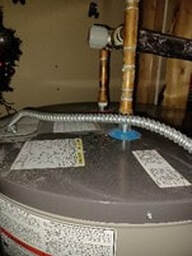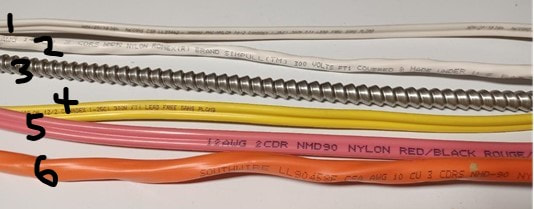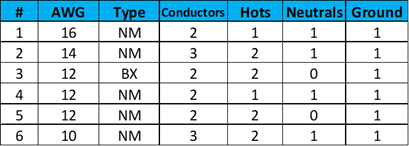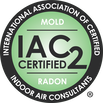Mike's Home Inspector BlogMichael Burfitt |
This picture shows a sample of the common types of wires seen in residential homes. Let’s summarize the data in an easier to understand format and take a look line by line looking at the wires pictured above from top to bottom:  BX Wire on a Water Heater BX Wire on a Water Heater AWG This stands for American Wire Gauge and is a standard designation in North America. It is important to note that the smaller the number, the LARGER the wire and its carrying capacity. Type There are two types visible in the photo: NM and BX. NM stands for Non-Metallic and is frequently referred to by a brand name called Romex. BX (or B experimental. Long story…..) is otherwise known as Armour Coated wire and while more expensive is great at providing protection against mechanical damage. Conductors You might see wires referred to as “14/2” or “12/3”. This is a measure of the gauge and the total number of wires (ignoring the ground wire). At least one conductor is always a hot wire, but the second wire is not necessarily a neutral, even though a circuit needs a neutral to complete the circuit. Yes, on the surface that makes no sense, but we’ll get to that! Hey, That is Way Too Abstract! You are probably thinking that you are just an everyday homeowner and not looking to become a master electrician. Fair enough, so let’s spell out in plain English what these various wires are used for. 1)This is a low-capacity wire that is usually for electronics or extension cords. It can be used to power small loads, such as lighting. 2)This is a #14 (very common) wire that has 3 conductors. Two common uses are for 3-way lighting switches and split receptacles, where for example a light switch can turn off just one half of a wall outlet. 3)This is an armour coated BX wire that, in our home is used to power our electric water heater. Since it runs on 240V using both hot lines entering a home, it needs two hot wires (red and black) but since it does not need 120V power the two hots can alternate acting as a neutral. This is why I keep repeating to LEAVE ELECTRICAL WORK TO ELECTRICIANS! 4)Used for 20amp circuits, seen in modern kitchens, which thanks to changes in electrical codes are far more common than in the past. 5)Similar to #3 except it has a plastic rather than a metal cover. Our home uses this type of wire for baseboard heaters. 6)This 10/3 is usually used for dryers and air conditioners. Since a dryer has 120V components, it requires a separate neutral. My purpose was not to confuse or overwhelm but rather to show you why it is so important to always hire an electrician to modify an electrical system, no matter how minor. Too small a wire can easily lead to a fire (the circuit breaker or fuse provides no protection against this) and while too large is generally okay, it is a waste of money and can be difficult to connect. A Final Note I occasionally see extension cords being used as a substitute for permanent wiring in homes that do not have enough receptacles. I cannot emphasize enough that this is a dangerous practice that can lead to a fire, especially if it is buried under a carpet or rug. These type of cords are not designed for more than a month's use and the buildup of heat can easily start a fire. The same principle applies to Christmas lights and why I use them exclusively in the month of December. |
Archives
July 2024
Categories
All
|
|
Inside Edge Home Inspections Ltd.
Halifax, NS 902-209-9921 [email protected] Proudly Serving the HRM & Central Nova Scotia |




 RSS Feed
RSS Feed

